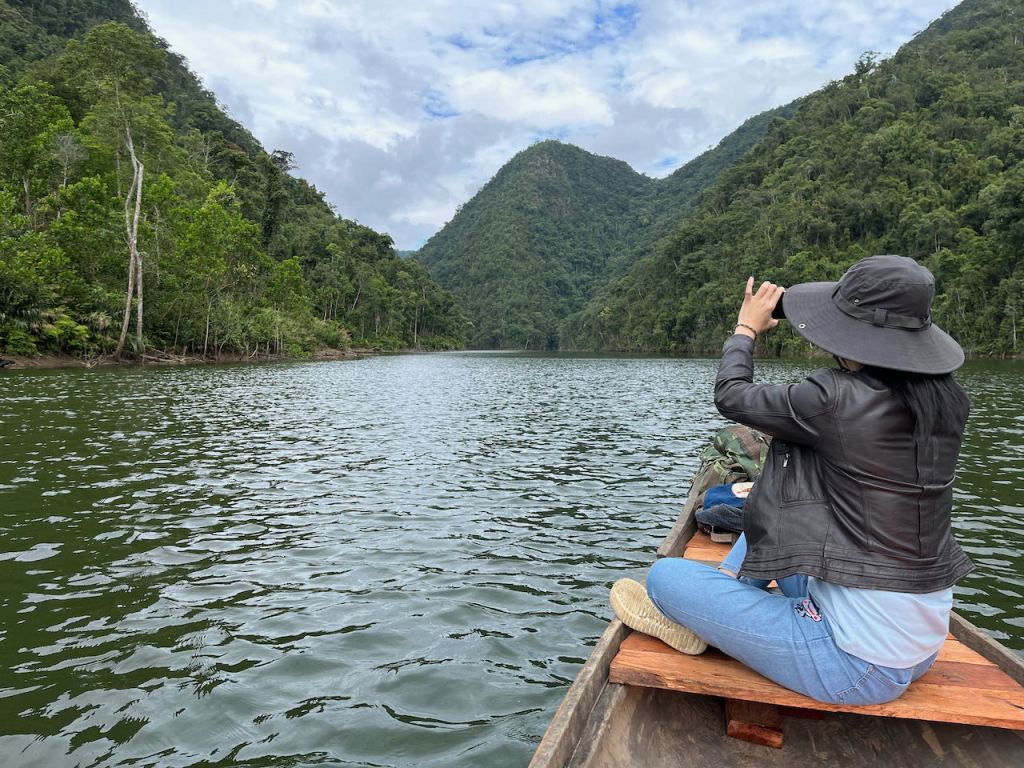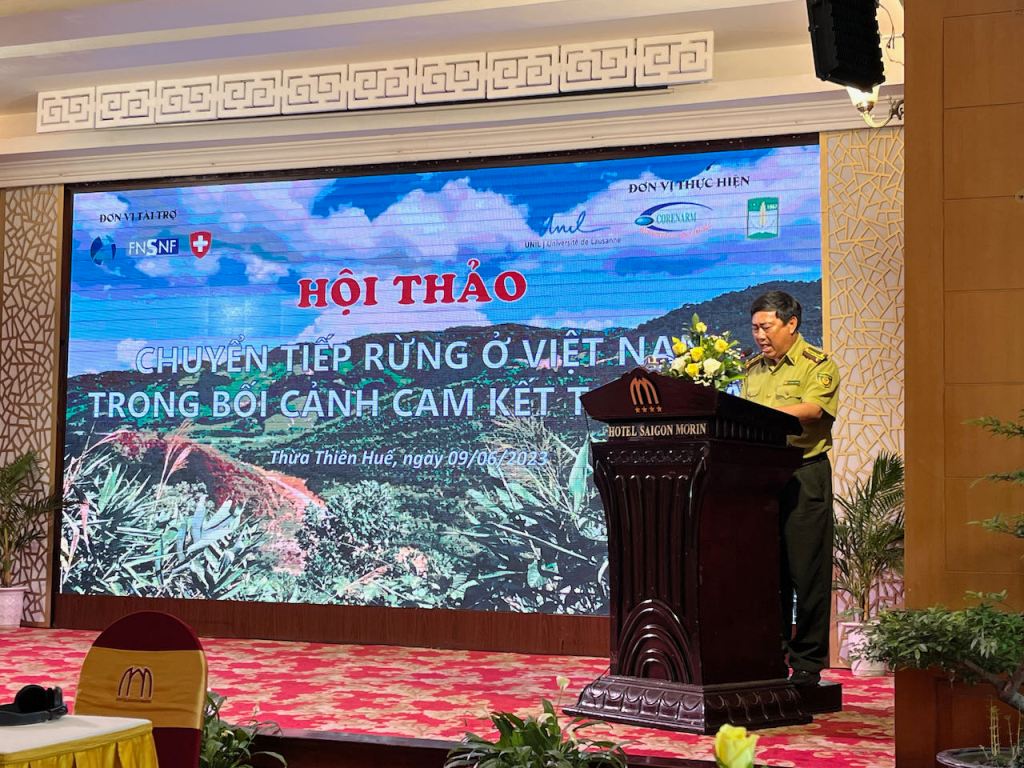

Our FT Viet project recently held a science-policy workshop on forest change and sustainability. After over five years of project activities, it was a chance to report on project outcomes and bring together key actors to reflect on the trends, direction, and sustainability of forest management in Vietnam. The 40+ people assembled in a hotel conference room in Hue on June 9 included people working at the national level in Hanoi, others from Thua Thien Hue and nearby provinces in the north Central region, and local stakeholders. There were university researchers and leaders, officials from the national payments for ecosystem services program, conservationists, leaders of forest certification programs, NGOs, and, of course, state foresters in their green uniforms.
The discussions reflected the complexity of protecting natural forest while harnessing exotic plantations for economic development. In my morning presentation, I summarised our project activities as well as a draft of a paper on pitfalls in ‘forest transitions’ . This is a concept that guides much analysis (and by extension, policy) on forestry around the world. Key messages included the obvious (that forest quantity – percentage of forest cover, numbers of trees planted – is not the same as forest quality and shouldn’t be confused with it) and the more critical (that forest transitions involve a bifurcation whereby ‘lived forests’ become either conservation-oriented ‘empty forests’ or production-oriented ‘money forests’, with attendant power transfers from local communities to state agencies and the market). Hopefully that will result in a paper I can blog about in the future.
The other presentations included two panel discussions with diverse participants, and excellent presentations by Dr. Trần Lâm Đồng (Vietnam Academy of Forest Sciences) on strategies for natural forest restoration, by Prof. Nguyễn Quảng Trường (Institute of Ecology and Biological Resources, VAST) on the implementation of the Global Biodiversity Framework in Vietnam, and Dr. Vũ Tấn Phương (Vietnam Forest Certification Office) on the role of forestry in carbon mitigation.



Some of the more colourful statements from my notes of that excellent day:
- “We should by 2045 be a modern country and no longer lean on forests for livelihoods, and just go to forests for camping”
- “There is a hidden motivation behind the category of ‘poor’ forest: it is that it will be transformed to exotic plantations” [the Forest Service allocates categories ‘rich’, ‘medium’, and ‘poor’ to all natural forests, ostensibly based on biomass].
- “What is most important is who is managing the forest, who owns the forest”
- “20 years ago I attended a similar workshop. In 20 years, will we need to do it again?”
- “The most important question is of forest ownership. If we can solve that, we can solve the question of investment” [investment in quality management, not just get-rich-quick plantations]
- “It is embarrassing that we established two nature reserves for the Sao La, and yet that species has not been seen again” [the saola is an ungulate mammal new to science just twenty years ago]



During the week I spent in Hue, we also had a science workshop at HUAF (the Hue University of Agriculture and Forestry), where our project doctoral students Thao and Canh presented their work, and a field visit to the community forest of Le Trieng 1 village (right on the Lao border in upland A Luoi district). This involved an unforgettable boat ride on a narrow new reservoir built for hydropower, with rainforest covered mountains on both sides. My sincere thanks to project partners Ngo Tri Dung (and his team at CORENARM, including Le Thi Diem Kieu) and Tran Nam Thang (and his colleagues at HUAF, from the rector to our project doctoral students) for their contributions to this successful event.






This research was funded by grants 400440-169430 and 400940-194004 to a project entitled “Assessing the ‘nature’ of a ‘forest transition’ in Vietnam: ecosystem services and social-ecological resilience in locally managed forest landscapes” from the Swiss Programme for Research on Global Issues for Development (r4d program), a joint initiative of the Swiss National Science Foundation (SNF) and the Swiss Agency for Development and Cooperation (SDC).

Great summary sir! Your photos could capture the best scene during last trip! Thanks for the interesting record.